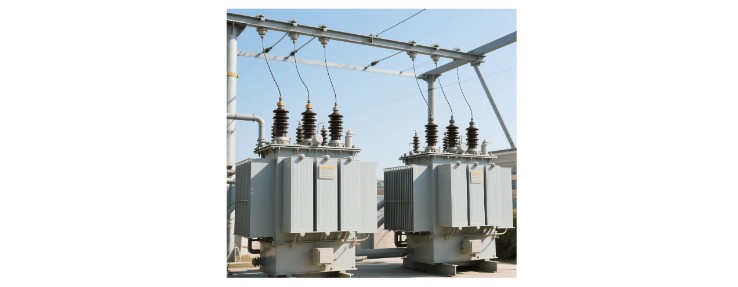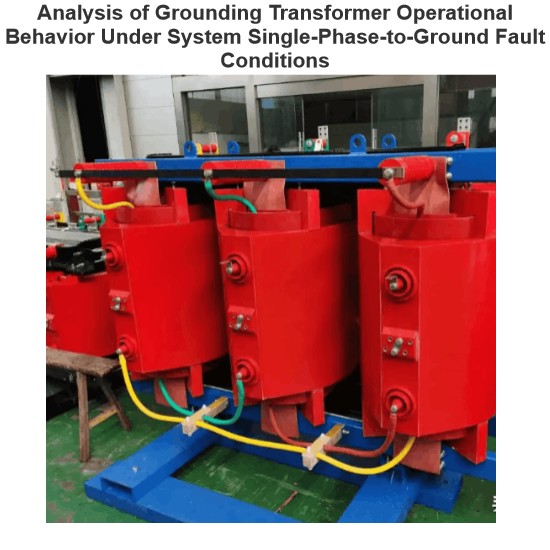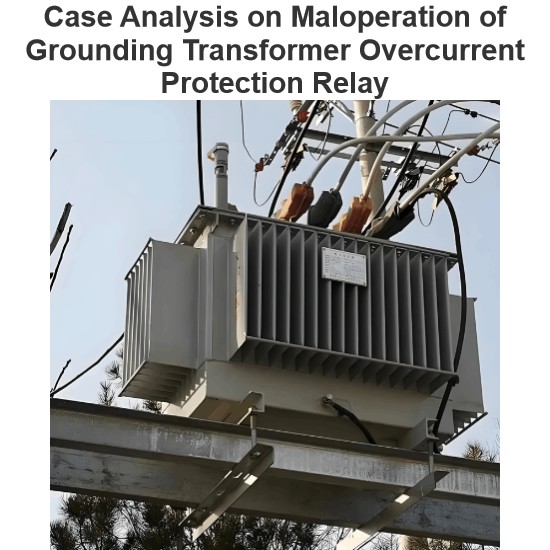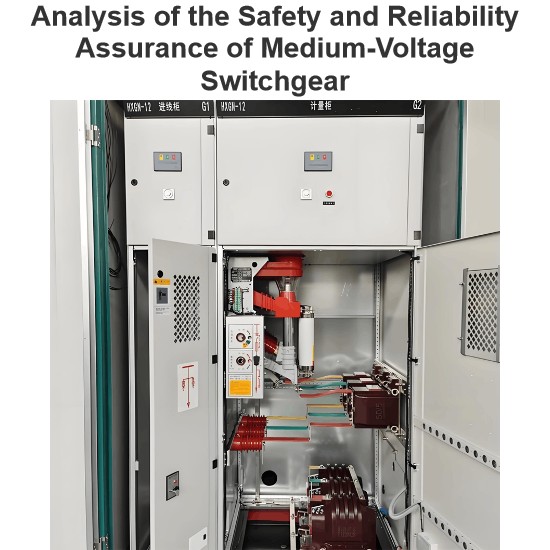Analysis and Solutions for Over - load Operation of Distribution Transformers
Reasons for Over - load Operation of Distribution Transformers
Unreasonable Monitoring Method
During the operation of a transformer, to ensure its safe operation, the load of the transformer is monitored. Currently, round - the - clock monitoring is mostly adopted to obtain the average load of the distribution transformer. However, due to the different demands for electrical appliances at different times, as well as the different power and quantity of equipment in operation in enterprises at different times, the load of the transformer will change.
The existing monitoring system has poor ability to monitor the load at different times, which prevents power enterprises from having an in - depth understanding of the transformer load at different times. When the transformer load is too high, power enterprises are unable to take relevant measures to reduce the transformer load, resulting in the over - load operation of the distribution transformer.
The Load of a Single Transformer is Too Low
In some areas, relevant personnel make mistakes in load calculation, and the unreasonable selection of transformers can lead to distribution transformers always being in an over - load operation state. There are mainly two situations of over - load power distribution operation:
One is the single - transformer power - supply mode. As the name implies, this mode uses a single transformer for power distribution. In this power - distribution mode, if the single transformer cannot meet the load requirements, it will lead to the over - load operation of the transformer. This not only fails to ensure the stability of power distribution but also easily causes safety accidents.
The other is the multi - transformer power - supply mode. Currently, in the power supply and distribution field, the mode of operating multiple distribution transformers is mainly adopted to ensure the stability of the power - distribution process. However, many power enterprises, in order to save costs, use multiple transformers with relatively small individual loads in this mode. After connection, they put them into operation. In this case, when one of the transformers fails, it will cause the entire distribution transformer system to be in an over - load operation state.
The Designed Power Consumption Growth Rate is Too Low
During the design and selection of transformers, it is necessary to estimate the power consumption growth rate in the future to ensure that the distribution transformer can always operate under normal load throughout its service life. Calculating the power consumption growth rate is a major task that requires a relatively detailed understanding of the regional planning and population growth rate. However, as China has now entered a period of rapid development, the power consumption in each power - distribution area has also entered a period of rapid increase. The rapid increase in power consumption is mainly caused by two factors:
One is the increase in the number of high - power electrical appliances. With the improvement of living standards, more and more households are purchasing high - power electrical appliances, which is completely different from the old living habits. Calculating and designing the power consumption growth rate based on old living habits will gradually lead to the over - load operation of distribution transformers.
The other is the increase in enterprise power consumption. Currently, many distribution transformers supply power to various enterprises. However, in the new era, various enterprises are increasing their production capacity, which greatly increases the power consumption growth rate and leads to the over - load operation of transformers.

Solutions for Over - load Operation of Distribution Transformers
Parallel Operation of Distribution Transformers
One of the reasons for the over - load operation of distribution transformers is the excessive working pressure on a single line. On this basis, attempts should be made to achieve parallel operation. Independent operation of multiple lines can avoid the problem of high working pressure on a single line. For the parallel operation of distribution transformers, factors such as equal rated voltage ratios, the same phase sequence, and comparable voltages need to be considered. Also, the capacity difference between transformers in parallel should not be too large.
Generally, it is not recommended that the capacity of the largest transformer exceeds three times that of the smallest one. For example, for a 400KVA distribution transformer, under normal circumstances, the working pressure is always maintained between 70 - 80%, but during peak power consumption periods, it can even reach over 100%, with active power reaching 420KW and the lowest load being only 18%.
In this case, the line can be reconstructed into a mode where a 315KVA transformer and a 200KVA transformer operate in parallel. When the load level is low, one of them is started for operation; when the working pressure is too high, both are started simultaneously, enabling them to meet the working requirements in a parallel state while achieving economical operation.
Parallel Operation of Distribution Transformers
One of the reasons for the over - load operation of distribution transformers is that a single line bears excessive working pressure. To address this, parallel operation can be implemented. Independent operation of multiple lines helps avoid the issue of high pressure on a single line. When operating distribution transformers in parallel, factors such as equal rated voltage ratios, the same phase sequence, and comparable voltages need to be considered.
Also, the capacity difference between parallel - connected transformers should not be too large. Generally, it is not advisable for the capacity of the largest transformer to exceed three times that of the smallest one. For example, for a 400KVA distribution transformer, under normal conditions, the working pressure remains between 70 - 80%, but during peak power consumption periods, it can even exceed 100%, with active power reaching 420KW and the lowest load being only 18%.
In such a case, the line can be retrofitted to a mode where a 315KVA transformer and a 200KVA transformer operate in parallel. When the load level is low, one of them is activated for operation; when the working pressure is too high, both are activated simultaneously, enabling them to meet work requirements in a parallel state and achieve economic operation.

Transformer Capacity Expansion
Transformer capacity expansion is a common approach to solve the problem of transformer over - load operation. This method requires a comprehensive analysis and investigation of the existing power supply work in various regions. It is necessary to understand the electricity consumption changes in different time periods, years, quarters, and months, especially the peak electricity consumption.
An average - value model is established based on regular data, and a singular - value model is established based on peak - value electricity consumption. Using the maximum values of current transformer operating parameters as linear constraints, several parameter diagrams are constructed. Through comprehensive analysis of all parameter diagrams, a standard power supply value and a maximum power supply value can be obtained.
These values are then matched with the operating parameters of the existing transformer. Taking the standard power supply value as the minimum value and the maximum power supply value as the upper limit, the basic capacity - expansion requirements can be determined.
On this basis, by collecting the electricity consumption changes in the local area over the past 10 years, assuming that the average electricity consumption has increased by 2% over these 10 years, an additional capacity increase of at least 2% on top of the basic capacity - expansion requirements is necessary to meet the power supply demand.
Application of Overload Transformers
To better prevent the over - load operation of distribution transformers, the application of overload transformers also requires key attention. This is because overload transformers are capable of operating continuously for 6h, 3h, and 1h respectively under 1.5 - times rated capacity, 1.75 - times rated capacity, and 2.0 - times rated capacity conditions. This provides a strong support for preventing the over - load operation of distribution transformers.
Through in - depth analysis, it is not difficult to find that compared with ordinary distribution transformers, overload distribution transformers need to withstand currents higher than the rated current, and the insulating materials used meet the insulation heat - resistance grade standard above grade B.
It should be noted that when applying overload transformers, attention should be paid to their insulation grades. Overload transformers with B, A, and F - grade insulation have different characteristics in practical applications, and there are also significant differences in economic efficiency. For example, the S13 - M(F) - 100/10GZ overload transformer adopts a wound core type and F - grade insulation overload product, which makes its insulation material grade F.

By conducting measurements such as winding - to - ground insulation resistance measurement, voltage ratio measurement, and connection group mark determination, winding resistance measurement, insulation oil test, external over - voltage withstand test, induced over - voltage withstand test, short - circuit impedance and load loss measurement, no - load current and no - load loss measurement around this model of overload transformer, it can be determined that the S13 - M(F) - 100/10GZ overload transformer meets various specification requirements.
And through the analysis of load - bearing capacity tests and temperature - rise tests, it can be further proved that this model of overload transformer has performance advantages. Through in - depth analysis, it is not difficult to find that the S13 - M(F) - 100/10GZ overload transformer with F - grade insulation has a lower cost, and it can generally meet the same load requirements as conventional distribution transformers.
Compared with the S13 - M(A) - 100/10GZ overload transformer, the rated capacity and external dimensions of the S13 - M(F) - 100/10GZ overload transformer are more similar to those of conventional distribution transformer products. The F - grade insulation has high anti - aging ability and heat - resistance temperature, which also makes the S13 - M(F) - 100/10GZ overload transformer have significant advantages in terms of high - temperature stability, mechanical properties, anti - aging properties, and the rising speed of the breakdown voltage during AC flashover. Thus, the service life of the distribution transformer is well guaranteed.
Hey there! I'm an electrical engineer specializing in Failure and Maintenance. I've dedicated my career to ensuring the seamless operation of electrical systems. I excel at diagnosing complex electrical failures, from malfunctioning industrial motors to glitchy power distribution networks. Using state - of - the - art diagnostic tools and my in - depth knowledge, I pinpoint issues quickly. On this platform, I'm eager to share my insights, exchange ideas, and collaborate with fellow experts. Let's work together to enhance the reliability of electrical setups.













